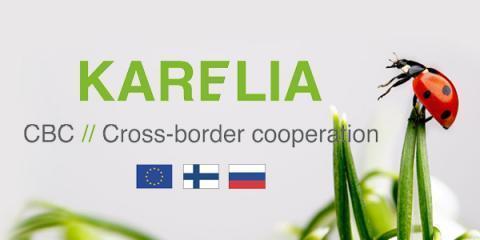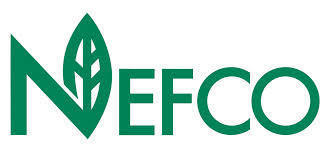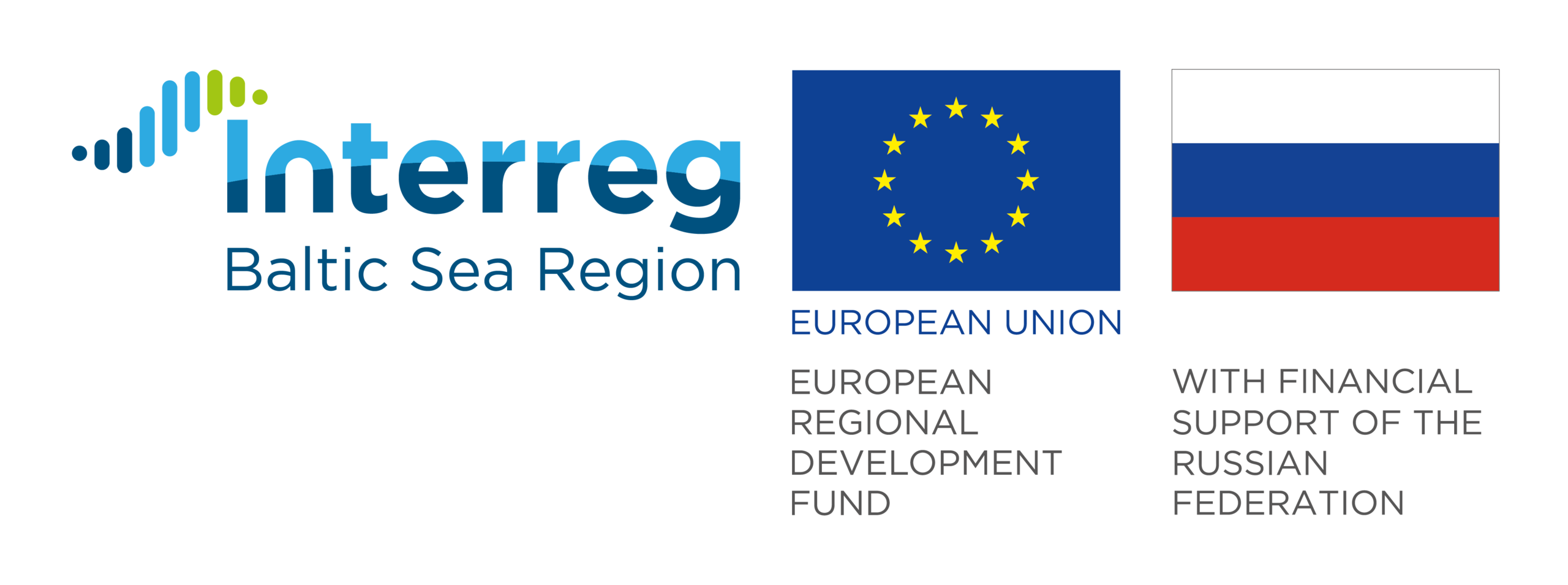Reports on the research work conducted in 2013
The research work in the framework of the Clean Ladoga project was done mainly during August - October 2013. The Northern Water Problems Institute of KarRC of RAS analysed 74 water samples from the lake and rivers by mid-November. The outcomes of their work are presented in the following reports:
- Anthropogenic impact of local discharge points on the northern part of the Ladoga Lake
- Anthropogenic impact of distributed sources of contamination on the northern part of the Ladoga Lake
- Mapping of water and biological resources of Lake Ladoga. Main hydrochemical data were plotted on a GIS map "Hot Spots of Northern Ladoga"

As regards to biology, experts of Project Partners' organizations - North Centre and Centre for Economic Development, Transport and the Environment (Oulu) have prepared 3 research reports:
- The assessment of Atlantic salmon and freshwater pearl mussel population condition in the Northern Priladozhje waters
- The survey of restoration needs for rivers running into the lake Ladoga
- Assessment of ecological condition in the rivers of the Lake Ladoga basin using hydrochemical characteristics and structure of hydrobiocenosis
The short descriptions and downloadable reports are presented below:
Anthropogenic impact of local discharge points on the northern part of the Ladoga Lake (Russian)
 Anthropogenic impact of distributed sources of contamination on the northern part of the Ladoga Lake (Russian)
Anthropogenic impact of distributed sources of contamination on the northern part of the Ladoga Lake (Russian)
The report contains water quality characteristic of 19 tributaries of the Ladoga Lake and its' assessment by regional maximum allowable concentrations of pollutants. It also provides the estimations of the chemical flow of tributaries and determines the anthropogenic influence on pollution of Ladoga from nonpoint sources water pollution by agriculture sector and trout farms located in Karelia. The report reveals that agricultural facilities are major contributors to heavy anthropogenic influence on the Ladoga Lake.
 Mapping of water and biological resources of Lake Ladoga (Russian)
Mapping of water and biological resources of Lake Ladoga (Russian)
The report presents brief characteristics of the water utilization in the Karelian part of Lake Ladoga . Based on the program «MapInfo 11.5» and digital 1:200 000 maps Geographic Information System (GIS) " Hot Spots Northern Ladoga " was created and a series of thematic maps with water quality characteristic indicators (phosphorus full , full nitrogen , biological oxygen demand, index water pollution ) . Worked out materials (maps and pictures) are completely based on the report Anthropogenic impact of local discharge points on the northern part of the Ladoga Lake.
The condition and size of Alantic salmon and freshwater mussel poplation is a reliable ecological indicator of safety of the northern rivers' ecosystems. Ladoga has 33 tributary rivers that used to be spawning areas for lake salmon (freshwater species of Atlantic salmon Salmo salar L.), one of the most valued fish species of Karelia, included into the Red Book (Valetov, 1999). The river flow of 16 rivers is regulated by 40 different dams that inhibit fish from moving to spawning areas. This is why natural reproduction of salmon takes place in lower reaches of revirs, or even stopped. Freshwater pearl mussel Margaritifera margaritifera L. is in danger of extinction in Europe. Its conservation status is provided by Annex II of Bern Convention (1979) and IUCN Red List of Threatened Animals (1996), as well as Red Data Book of East Fennoscandia (1998), Red Data Book of Russia (2001) and Red Data Book of Karelia (2007). A unique feature of the pearl mussel is unusually extended lifespan, which in some cases can be more than 200 years. Reducing the number of young salmon leads to reduction of the life cycle of pearl mussel, because the intermediate host for the mussel's larvae (glochidia) is a salmon whitebait.
In the course of the authors' research work it was idetified that freshwater salmon is currently being repoducted in 10 rivers and comes into three rivers episodically. In 23 rivers there are passing and living bulltrout exist. For the first time an assessment of the location and dimension of spawning areas, nursery areas, defined densityof distribution of juvenile salmon and bulltrout, identified salmon stocks of the specific populations. During the study of rivers the only one colony of freshwater pearl mussel in the river Syuskyanjoki was identified and examined, the data describing the size structure and abundance of shellfish was received. Alos the infection rates and survival glochidia on the gills of juvenile Atlantic salmon were studied.
The survey of restoration needs for rivers running into the lake Ladoga
The Land-locked Salmon in the Ladoga (Salmo salar m. sebago) is classified as endangered. Its breeding areas have been deteriorated both in quality and quantity due to human activities (Titov et al. 2008). Some of the former spawning and nursery areas have completely disappeared. Rivers, rapids, and habitats of salmonids have been under change for a long time period. When the timber floating was still used, stones of rapids were removed by hand to enable free passage of logs. The construction of mills and power plants has changed the flow regimes and water levels. This report presents the results based on fieldtrip survey (26. – 30.8.2013) and map surveys. Brief descriptions of the restoration propositions and methods have been prepared. In addition, justifications why they are suitable for restoration targets have been included.
The potential restoration sites were explored in seven rivers of the northern territory of Ladoga. Restoration needs varied depending on location scope and hydro-morphological status of the rivers. Most sites can be restored by traditional restoration measures such as increasing diversity for example with introducing stones, wood (LWD, large woody debris) and gravel in the river bed. The need of fish pass facilities at old and modern hydro dams was evaluated in rivers included in this survey. There are many obstacles in the rivers formed by both old and modern hydro power plants for Ladoga salmon. In some rivers the dams block all migration between production areas (spawning and nursing grounds) and the lake Ladoga (feeding grounds). Therefore, it is important that the assessment takes into consideration the whole lifecycle and the different life stages of the land-locked salmon. The obstacles have a significant negative impact for migratory fish in the rivers of the lake Ladoga, especially for the salmon.
According to the results of the survey, the most effective measures to increase the production of land-locked salmon and other anadromous fish species are the constructing of fish up- and downstream pass facilities at the dams (especially in Yanisjoki and Tokhma rivers) and the improving of the channel’s diversity by removing old timber floating structures creating bigger potential for breeding and nursing with their gravel, wood and stone material (e.g. in Sjuskua and Tulema Rivers).
When choosing the restoration sites, their socioeconomic aspects were evaluated as well. The restoration site is a concrete example of active water management work. The profit from the operating will spread to other users, too. In restoration projects, many groups and stakeholders can integrate, combine their interests and collaborate. Common interest in other environmental issues such as wastewater management increase, when improving the morphological state and the scenery of rivers while at the same time get positive effects on fish stocks. For example, the naturally reproducing land-locked salmon has a very high status and the improved stocks can be one attraction for the tourism of the Ladoga area in the future. The purpose of the pilot restorations is to act as a model and the experiences and methods used can be utilized at other restoration projects in the Ladoga and other Karelian rivers.
 Assessment of ecological condition in the rivers of the Lake Ladoga basin using hydrochemical characteristics and structure of hydrobiocenosis (Russian)
Assessment of ecological condition in the rivers of the Lake Ladoga basin using hydrochemical characteristics and structure of hydrobiocenosis (Russian)
The hydrochemical features and condition of biological communities in the rivers of the Lake Ladoga basin are considered in the report . The comparative analysis of species composition, structure and biomass of phytoplankton, phytoperiphyton and macrozoobenthos in 6 tributaries of the Lake Ladoga have been carried out on materials of observations in 2013. Influence of natural and anthropogenous factors on formation of river hydrobiocoenoses structure has been analyzed. Saprobiological condition of the rivers and their trophic status has been assessed. The importance of separate communities and biotic indices for bioindication of an ecological condition of the rivers is estimated.


